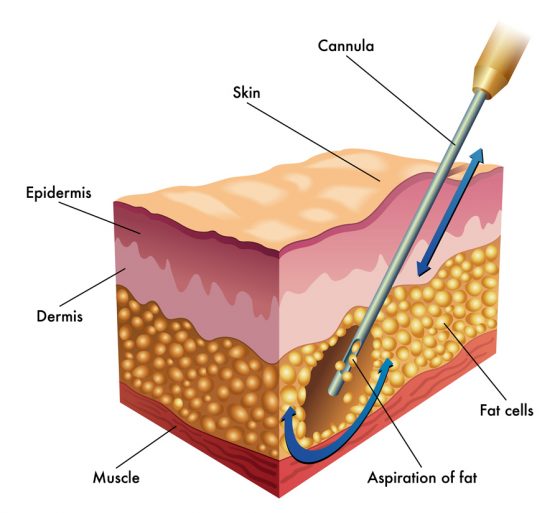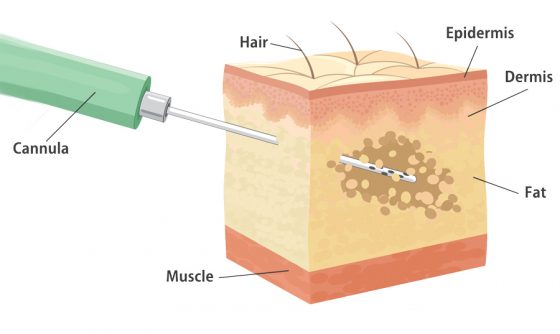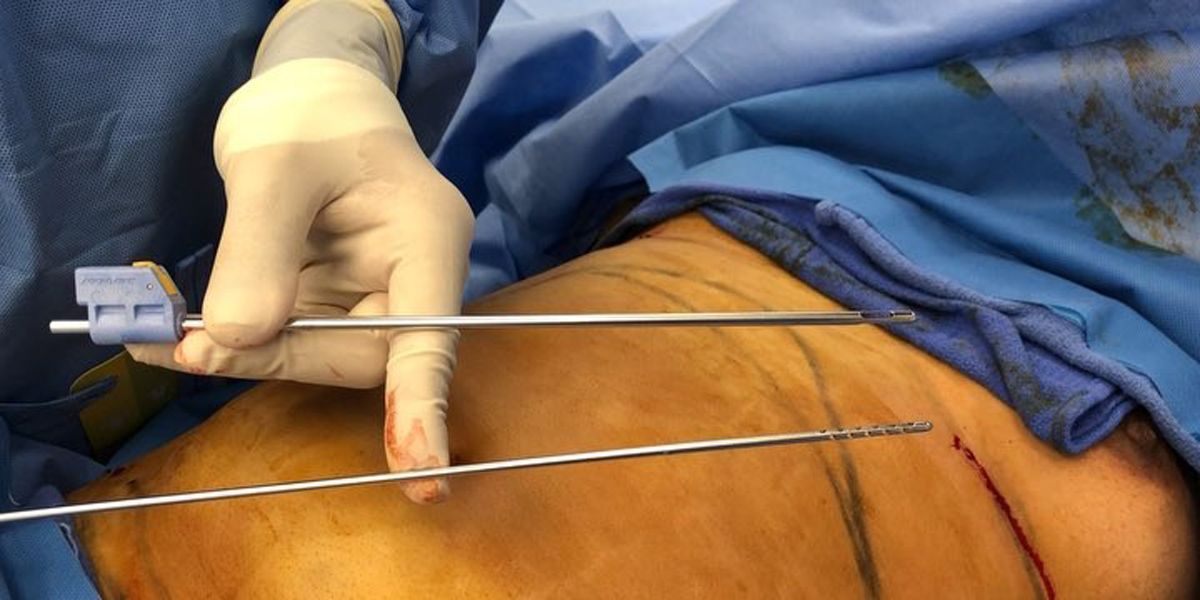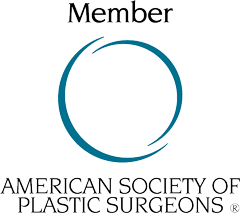
The short answer is that it depends on what method was used to do your liposuction. It is largely a function of the size of the cannula used to extract the fat.
If your surgeon uses 3mm cannulas for the fat extraction, you will likely not need massage therapy! If he uses larger cannulas, you likely will need massages.
Patients are constantly asking me this question and they always seem surprised when I tell them that my liposuction technique does not require post-operative massages. This is because I use thin cannulas to extract the fat. Some surgeons use larger 5mm cannulas for the fat extraction.
liposuction performed with thin 3mm cannulas does not need massage therapy post operatively
Which types of liposuction require massage post operatively?
- If the surgeon uses 5mm cannulas or laser/ultrasonic liposuction, you will need post operative massage
- If the surgeon uses thin 3mm cannulas with post operative compression garments, you should not need massage
Large 5mm cannulas = more fluid collection in tissue
While large cannulas this allows the surgery to be done faster, the larger cannulas can be more damaging to the tissue . There are larger pockets for fluid to collect. This is why some surgeons require lymphatic massage, as they want you to get massages to help push out the collected fluid in the tissue cavities.
Therefore, techniques that use thicker 5mm cannulas do benefit from lymphatic massage therapy to remove the excess fluid and reduce seroma type complications. On the other hand, small cannula liposuction techniques do not need massage therapy to get the desired results!
Let me go into more detail to explain why massage techniques are helpful in some cases and not needed in others.
Massage therapy is generally recommended for three reasons:
- to push fluids out that have collected in the large tunnels created by large cannulas
- to reduce swelling
- to “break up” scarring and prevent skin surface contour deformities that are cased by internal scar adhesions in the subcutaneous tissue
All of these issues need to be solved in order for you to get a smooth, even liposuction result.
What causes swelling and internal adhesions after liposuction?
To understand what causes swelling and internal adhesions after liposuction, you have to think about what happens during the procedure. A hollow or solid metal tube called a “cannula” is inserted into the subcutaneous space above the muscle and below the skin like this:

As the cannula glides back and forth in the subcutaneous tissue, it will break up some of the connective tissue to various degrees. Depending on the amount of damage there can be swelling, and the attempt to repair the damage sometimes leads to scar formation and internal adhesions.
Fluid collection and swelling after liposuction
Normally, fluid comes out of the blood vessel (arteries and veins) and accumulates in the spaces that are in between cells and organs. This is called the interstitial space. The Lymphatic vessels are small fragile vessels that absorb this fluid in the interstitial space and return it to the veins.
These fragile lymphatic vessels can be injured during liposuction. When this happens, you get swelling as the tissues are soaked with fluid that is not being drained by the damaged lymphatics.
Larger cannulas will create more ‘open space’ (than a thin cannula). The increased open space gives more opportunity for more fluid to collect there. Bigger cannulas invite more fluid accumulation in the tissues.
“Lymphatic massage” is a massage technique used to help the fluid move along to areas where the lymphatic system is intact and, as such, the extra fluid can be drained.
Another method used to control swelling is compression. I personally believe that if you use compression early on, and continuously, you can reduce or eliminate the need for lymphatic massage.
Internal Adhesions
Internal adhesions happen after liposuction when a significant amount of tissue has been damaged or taken out and the hole left by the cannula has to be repaired or filled in by scar tissue. The larger the hole (from the cannula), the more repair there is to do. Larger cannulas leave larger holes.
Internal adhesions can cause dimpling or furrows in the skin after liposuction. The scar tissue binds to the edges of the remaining healthy tissue. This is called an adhesion. It can form a hard mass and in time starts contracting. This contraction of the scar pulls in the skin, creating a dimple or a furrow in the skin.
To prevent this dimpling, a stronger massage technique is used to “break up the scar.” Massage techniques, such as rollers, are used to break up this scar as it is being formed to prevent formation of adhesions that pull on the skin.
Types of Liposuction and when massage is necessary
There are three common liposuction techniques where we can plan for whether lymphatic massage will be needed or not.
The only technique which does not require massage after the surgery is when surgery is performed with thin cannulas. This is because the tunnels (from the fat extraction) made by the thin cannula are so small that they do not accumulate fluid like big tunnels made by bigger cannulas.
Liposuction performed with thin cannulas does not need post operative massage to attain a smooth result.
Ultrasonic / Laser Lipo
An ultrasonic cannula or a laser cannula works by emitting energy that will liquefy, or “melt,” fat cells along the path of the cannula. These dead fat cells are then sucked out.
Unfortunately, that same energy can damage some cells that do not get sucked out. The body then creates an inflammatory response around these dead or damaged cells which, in turn, creates further tissue destruction.
The result is large tissue gaps that have to be repaired or get filled in by scar tissue. Postoperatively , many surgeons performing this technique will recommend massage therapy . In many cases, unfortunatley, massage therapy is the only way to get a final result that is smooth.
Large Suction Cannulas
Conventional suction cannulas suck whatever is surrounding the cannula. The larger the cannula, the larger the gap of missing tissue that is left behind. These large cannulas create tunnels where fluid accumulates.
Any cannula above 4 millimeters in diameter can leave tissue gaps. Sometimes these large tissue gaps get filled in with fluids and that is called a seroma.
Small Suction Cannulas
When you use small cannulas, 3 millimeters in diameter or less with small suction holes, it is virtually impossible to leave large tissue gaps that will result in scar tissue.
The reason is that by taking out the tissue in multiple small fragments, you leave normal tissue in between that can repair the tissue without creating scar masses or internal adhesions. There is also less fluid collection in these cavities.

Summary: small suction cannulas do not need lymphatic massage afterwards
Needless to say, any surgeons who are using large cannulas, Laser lipo, or ultrasonic lipo should consider massage therapy for all of their patients.
I have been performing liposuction in my practice since the early 90’s and I have never referred any liposuction patient for massage therapy after surgery.
I would never depend on a massage therapist to smooth out my surgical result! Likewise, I have not had any patients develop seroma after liposuction in years.

(originally published on December 20, 2019)




Lash Lift and Tint Richmond va says:
Dr. Ricardo L. Rodriguez says:
Razel says:
Dr. Ricardo L. Rodriguez says:
fourseasonslasercenter says:
Dr. Ricardo L. Rodriguez says:
Mark Ho Asjoe says:
Dr. Ricardo L. Rodriguez says: